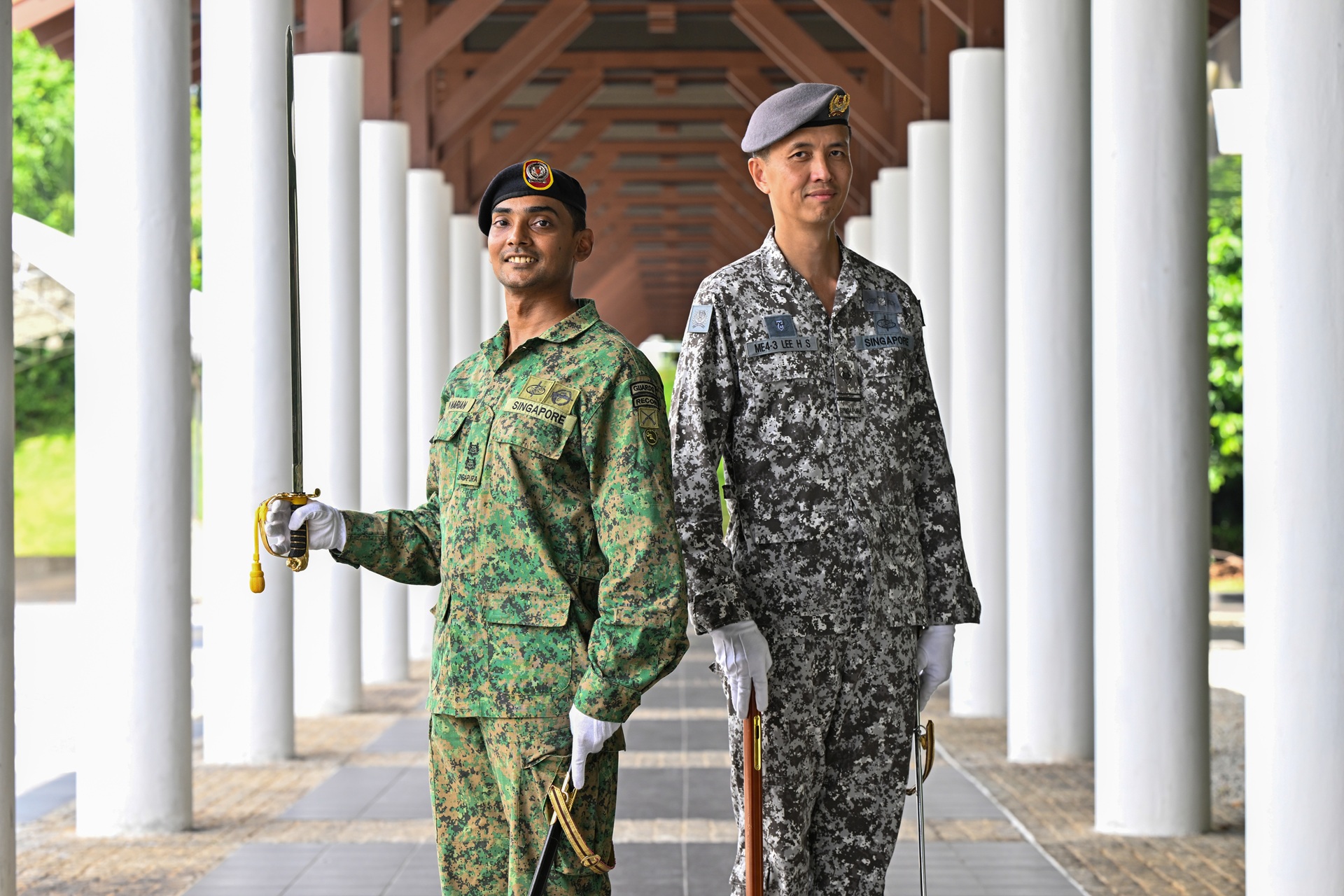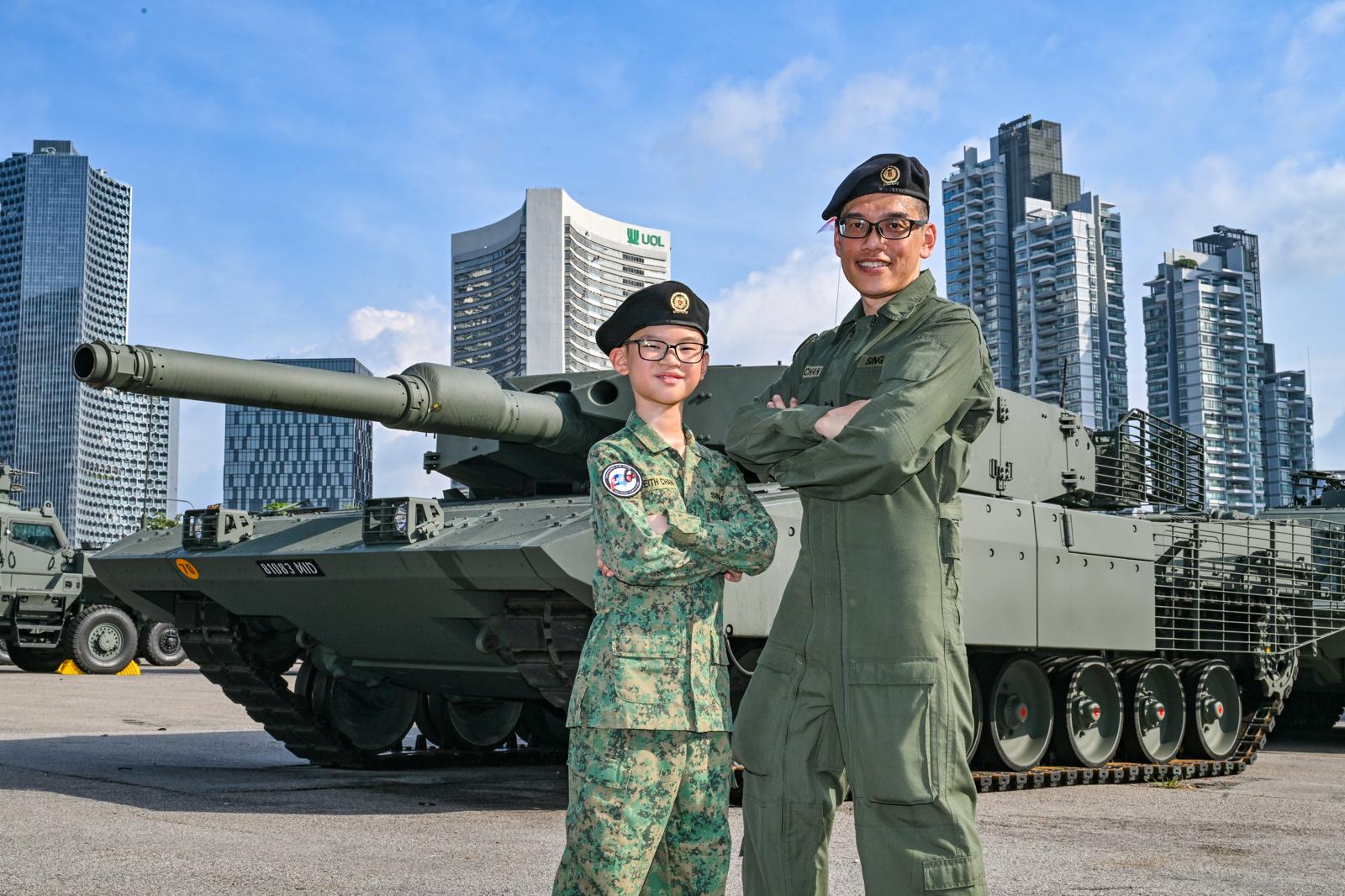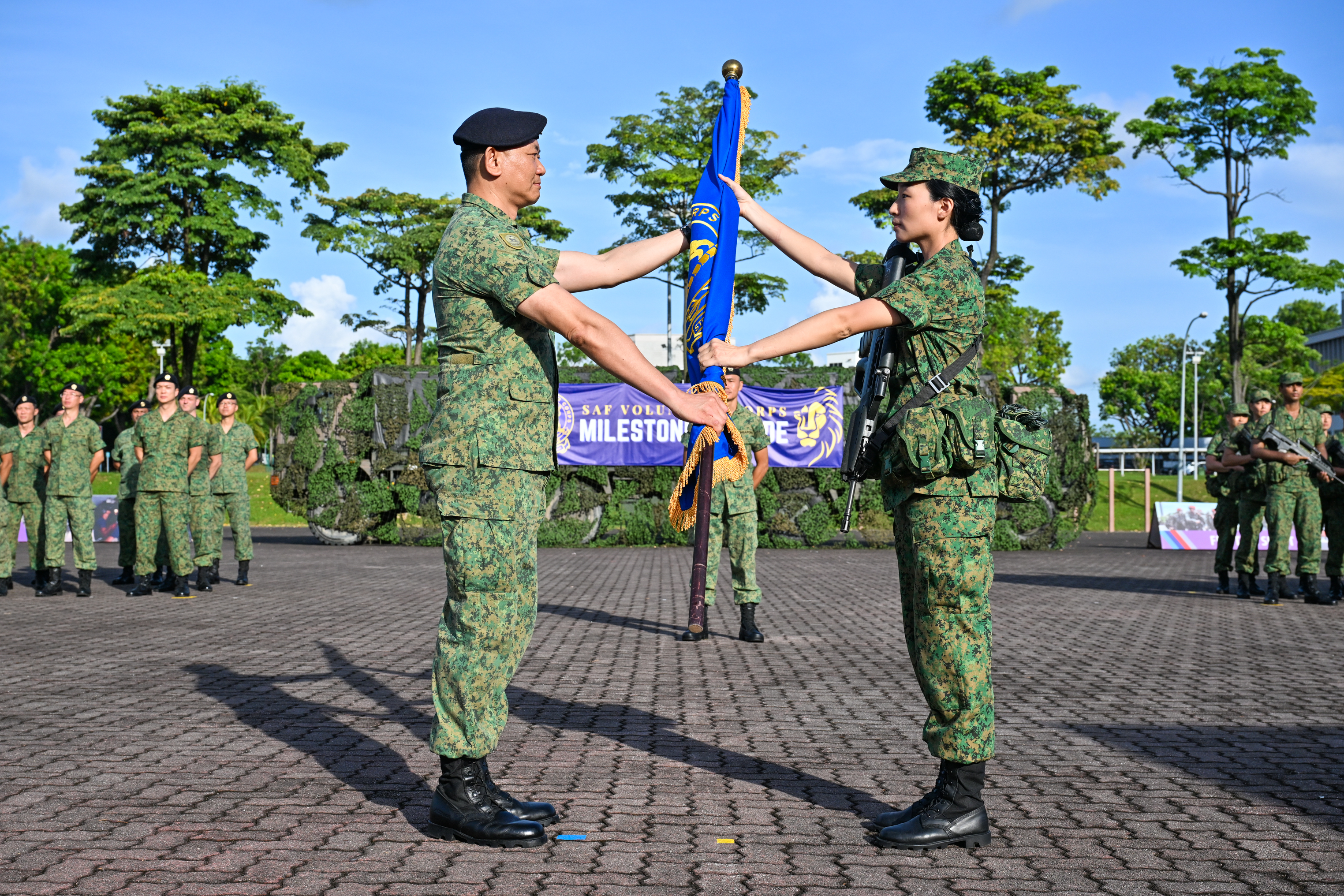PROTECTING SINGAPORE'S SKIES 24/7
STORY // Koh Eng Beng
PHOTO // PIONEER Photographers & Courtesy of MBDA
An aircraft requests an emergency landing in Singapore because of an engine fault. But what follows is a bout of radio silence. Could it be a hijacked plane in disguise?
Taking no chances, the RSAF scrambles its fighter jets to check on and escort the aircraft. At the same time, its Ground-Based Air Defence (GBAD) units adopt a state of high readiness.
This is one of the scenarios the RSAF has prepared for since the fateful 9/11 terrorist attack. Like many countries, Singapore stepped up security measures to prevent terrorists from turning a hijacked plane into a suicide attack.
To deal with such complex, transnational peacetime threats as well as traditional threats, the RSAF started building up a Third Generation Networked Multi-layered Island Air Defence System.
In recent years, it has brought in advanced platforms such as the Gulfstream 550 Airborne Early Warning aircraft and the Surface-to-air PYthon and DERby (SPYDER) missile system. These and other capabilities are networked to enable the RSAF to see further and respond faster and more effectively.
Eyes on the sky
All air defence operations are managed and planned by the RSAF's Air Defence and Operations Command (ADOC). Whether during times of peace or conflict, potential threats have to be identified early.
With the rise of terrorism, the need for early detection has grown exponentially because terrorists do not follow the rules of conventional warfare - the threat is unknown, can come from anywhere, and strike suddenly.
Singapore's skies are always monitored round the clock. The 24/7 nerve centre of the RSAF's air defence system, comprising a group of air traffic and air defence controllers, watches over Singapore's skies using a suite of long-, medium- and short-range military sensors.
The data collected from the different sensors, including civilian air traffic radars, are fused to form a complete air picture. The surveillance is an intense task; at any point in time, Air Warfare Officers (Command, Control and Communications) and Air Operations and Systems Experts can be staring at over 200 blips on the screen.
Each blip represents an aircraft or a possible aircraft, and each has to be identified using information from civilian aviation and intelligence agencies. Based on the information, the controllers have to detect questionable aircraft from the sea of blips through their flight characteristics, track them and watch for any further suspicious movements.
"We can check with various agencies to assess the pilot's intent. We need to know where the aircraft has been, who the passengers are, and whether there are people among them who might be of concern to us," said Commander of ADOC, Brigadier-General (BG) Cheng Siak Kian.
"And if someone claims to have a weapon or bomb on board, we would need the intelligence agencies to provide us with details about that person."
Rapid response
The RSAF not only has a robust surveillance system and information network to identify and track potential threats, it can orchestrate a rapid and effective response.
The RSAF's fleet of F-16, F-15SG and F-5 fighter jets are on 24/7 standby on a rotational basis; they can be scrambled for operations in a matter of minutes.
The same goes for its GBAD units which operate an array of surface-to-air missile systems such as the I-Hawk and SPYDER systems.
The operations of the fighter jets and GBAD units are tightly orchestrated by the air defence control team.
When activated, the pilots and GBAD operators have to adhere to a strict set of rules of engagement - manoeuvring to intercept the threat, conducting visual checks, escorting the aircraft or even firing warning shots - while reporting their observations to the control team.
These drills are practised regularly and in great detail. The activation plan was put to a real test in 2008 when an unknown light aircraft was detected heading towards Singapore without an approved flight plan.
The response from the RSAF was quick and decisive. Two armed F-16D+ fighter jets were scrambled to intercept the errant plane, and GBAD units readied their weapon systems. The Cessna turboprop plane was eventually escorted to Changi Airport without incident.
BG Cheng noted that although the incident turned out to be a false alarm, it proved that the RSAF was always ready when called upon. Even if there was a real threat, the show of presence by the RSAF in the air would discourage anyone with ill intent from taking their chance.
"The fact that the fighter pilots are going to be there to present themselves, to direct the aircraft, and deter them from flying certain flight profiles - that's something that will certainly factor into the (intruder's) psyche."
Layered & networked
The RSAF has a multi-layered air defence system. The outer range is covered by the fighter jets, while the inner ranges are covered by various GBAD surface-to-air platforms such as the I-Hawk system and SPYDER.
These assets are networked to prevent a single point of failure. If any single sensor or weapon system is down, it will have minimal impact on the air defence system as other systems can continue to function.
Networking also provides greater strike effectiveness. In the past, a weapon system or shooter relies on its own sensor to detect and track targets. But today, the shooters and sensors are connected. Tracking data from a particular sensor, such as the FPS 117 or Giraffe Agile Multiple Beam (AMB) Radar, can be relayed to the shooter most suitable to eliminate a particular threat.
"The whole idea is to allow you to centrally command these weapon systems on the network. More importantly, we can now select the best shooter, using the best tracking radars, to intercept any incoming targets more efficiently and effectively," said BG Cheng.
The RSAF is also constantly improving its air defence system to deal with emerging threats. For instance, the SPYDER, which was brought into the RSAF in 2011, has the capability to intercept precision munitions. And the G550-AEW aircraft, which has a detection range of over 200 nautical miles, was brought in to provide an extended range of surveillance.
Going forward, the RSAF will be replacing the I-Hawk system with the ASTER-30 Missile System. The next generation surface-to-air missile system can take out fighter aircraft up to 70km away.
BG Cheng said: "We have built an Island Air Defence System that allows us to defend the country from a wider range of threats that we may face, both now and into the future."
He added, however, that it is the servicemen, and not the hardware, that allow the RSAF to provide this high level of assurance to Singaporeans.
"Post-9/11, the need for a 24/7, very high level of vigilance and alertness to survey the skies became more pronounced. It is a highly demanding job, and we couldn't do it without the dedication of our people in the RSAF."
Ready to scramble
What happens when a possible airborne threat is detected? In the case of 145 Squadron (SQN) which operates the F-16D+ fighter jets, an alert upgrade announcement would be heard over the Air Base.
Pilots and Weapon Systems Officers (WSOs) (Fighter) on standby duty would drop whatever they are doing, grab their flight helmet and gear, and dash to their jets. Every second counts during a scramble.
In just a matter of minutes, they would be up in the skies en route to their objective. Their mission in such cases would typically include visual identification, intercept and escort of the unknown aircraft.
The fighter jets act as the eyes in the sky for the air defence controllers on the ground.
"From the lessons learnt from 9/11, hijacked aircraft may pose as aircraft in distress. Obviously, the air controllers won't be able to know what's really happening," said pilot Lieutenant (LTA) Emil Vincent Lau.
"So they send us up to be their eyes in the sky. And from there we will be able to make the recommendation whether to escort them or to turn them away from Singapore."
The pilots are trained to react in a variety of scenarios and keep a lookout for trigger points: Is the errant pilot responsive and forthcoming? Is he under duress? Is the aircraft turning in a direction that it is not supposed to go?
The pilots then relay information to the air defence control team, and the executive officers on duty - a senior RSAF commander and his command team - will decide on an appropriate response.
"The process is very fast. But we have trained extensively...and are prepared to take appropriate action without hesitation when the time comes."
Sense of responsibility
The I-Hawk operators from 163 SQN know that they hold great responsibility in protecting the national airspace because after the fighter jets, they are the next layer of Singapore's air defence.
Deployed 24/7 across Singapore, they operate the only medium-to-high altitude air defence surface-to-air missile system in the RSAF's GBAD arsenal.
"We find the work purposeful because we're protecting the airspace so that Singaporeans can sleep soundly at night," said Captain (CPT) Randall Wu, a Fire Unit commander. He completed his full-time national service (NS) as an officer in 163 SQN but found his work so meaningful that he signed on as a Regular.
Similarly, Corporal (CPL) Ong Jun Yong, a full-time national serviceman (NSF), feels strongly about his role as an Air Defence Weapon Operator.
He said: "Not every NSF has the chance to do live ops daily. If there are any threats, we have to be ready to engage them to protect Singapore."
The 20-year-old will be extending his NS by three months next year to hone his proficiency in his first live-firing exercise.
"You don't get this chance very often. So I want to grab it to gain the experience."
Apart from peacetime deployments, 163 SQN also trains its troops for wartime scenarios in which operators have to move out in the field, and set up the I-Hawk system. To sharpen their skills, they take part in high-profile exercises such as the Five Power Defence Arrangements exercises. Such multilateral training allows them to practise tracking fighter jets flying through a larger airspace.
Can these servicemen live up to their responsibility?
There is only one answer for 1st Sergeant (1SG) Thiyagaraj S/O Subramaniam, an Air Defence Systems Specialist. "We have been through deployments, we know the capability of our system and we know we can engage a target. If a situation calls for it, we know we are competent and able to defend Singapore."
It takes two
When it comes to the defence of Singapore's skies, it takes more than just fighter jets. To combat a wide range of aerial threats, both airmen and ground-based air defence personnel must work in tandem for better and more effective protection.
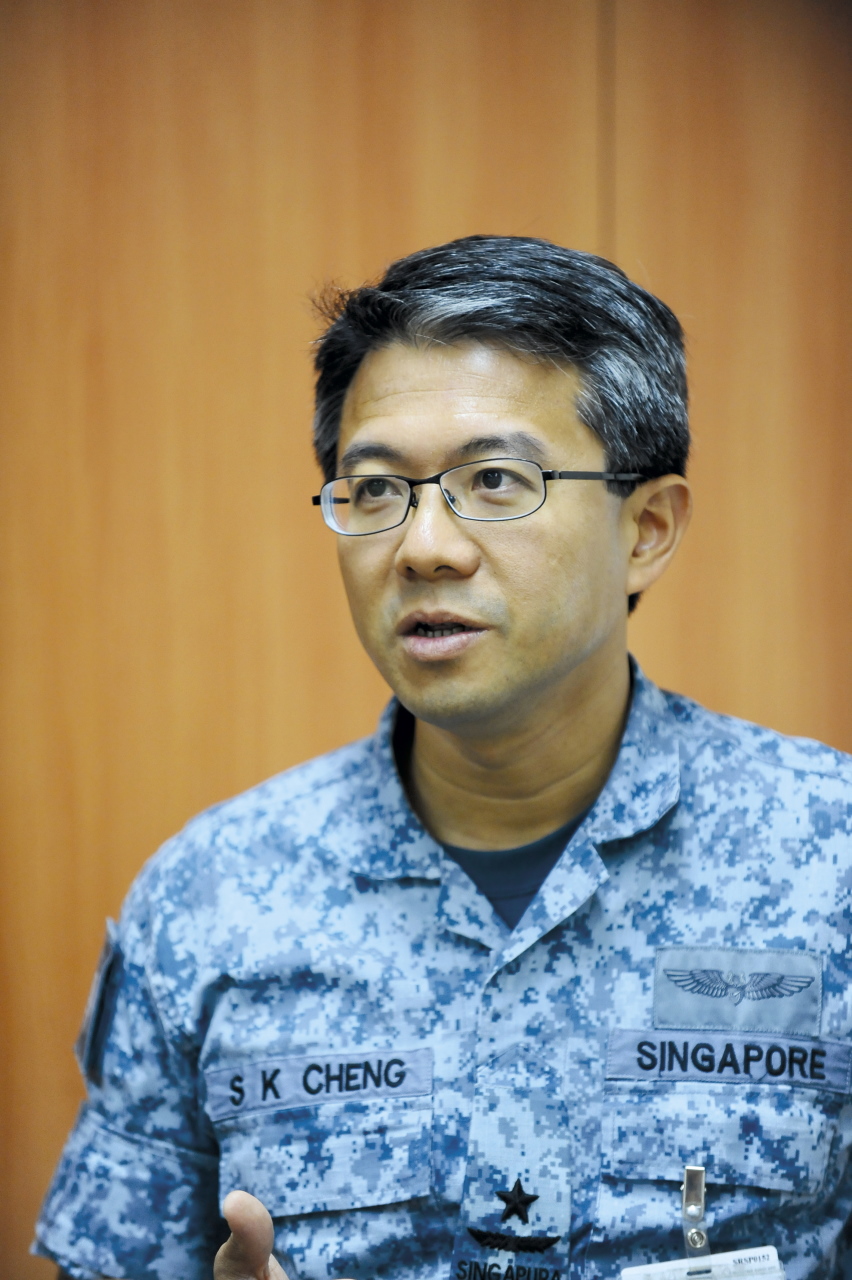
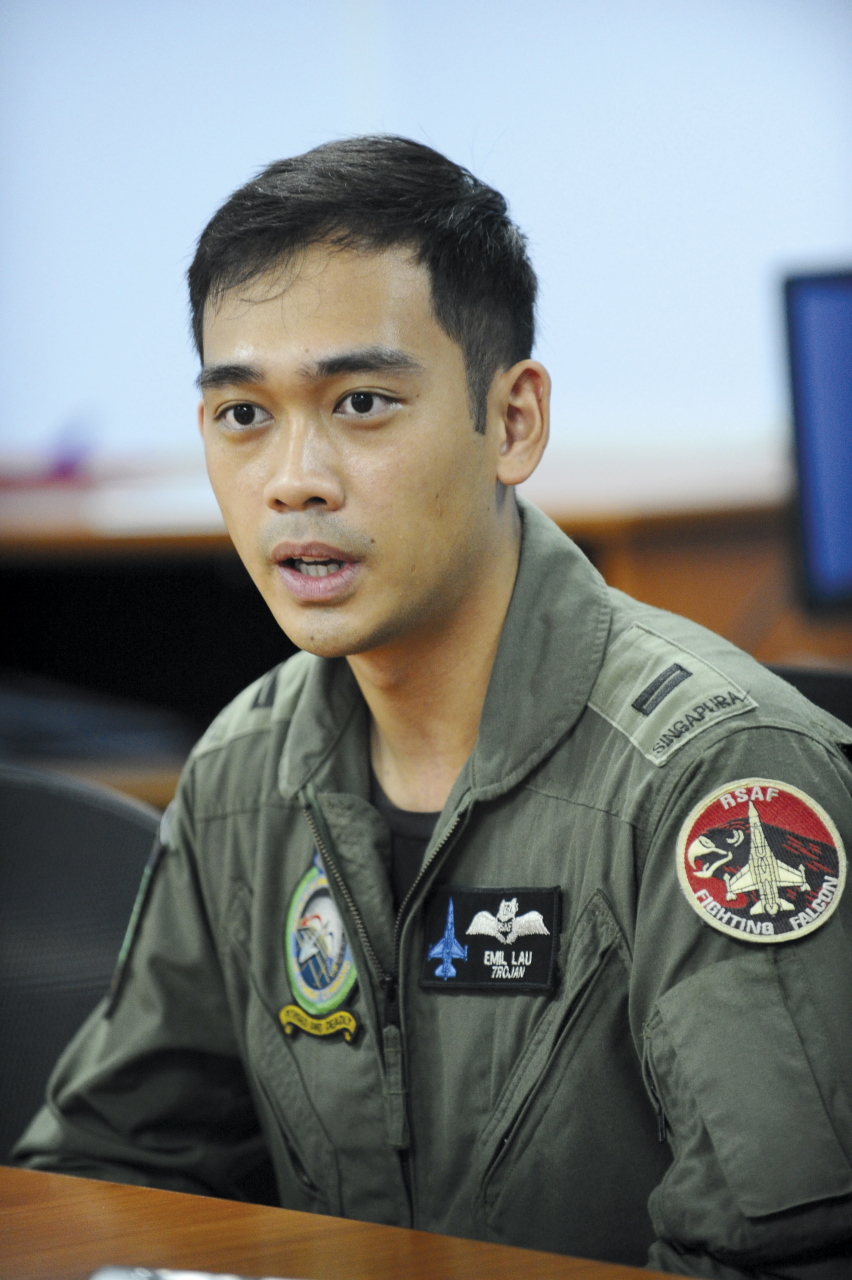
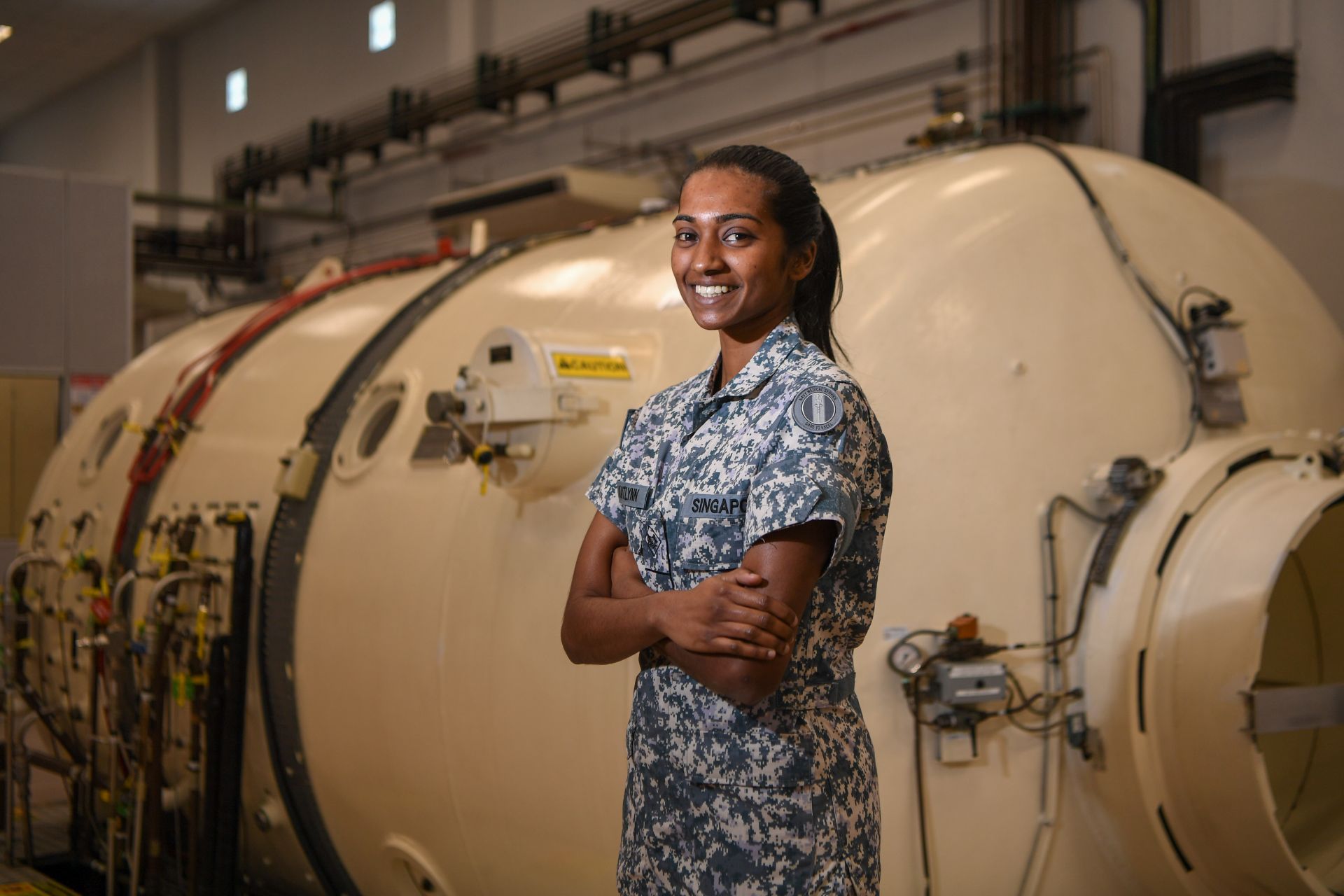
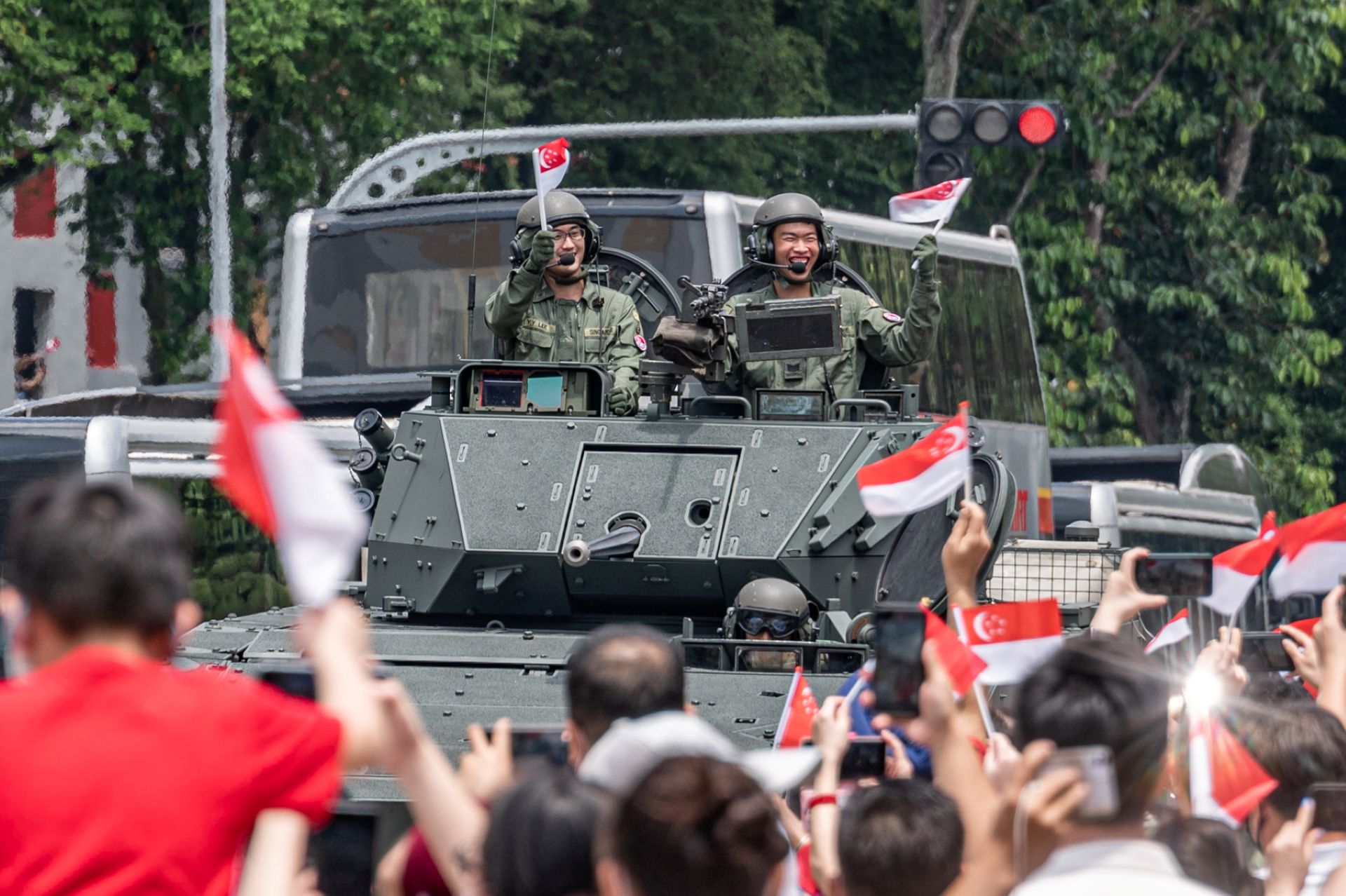
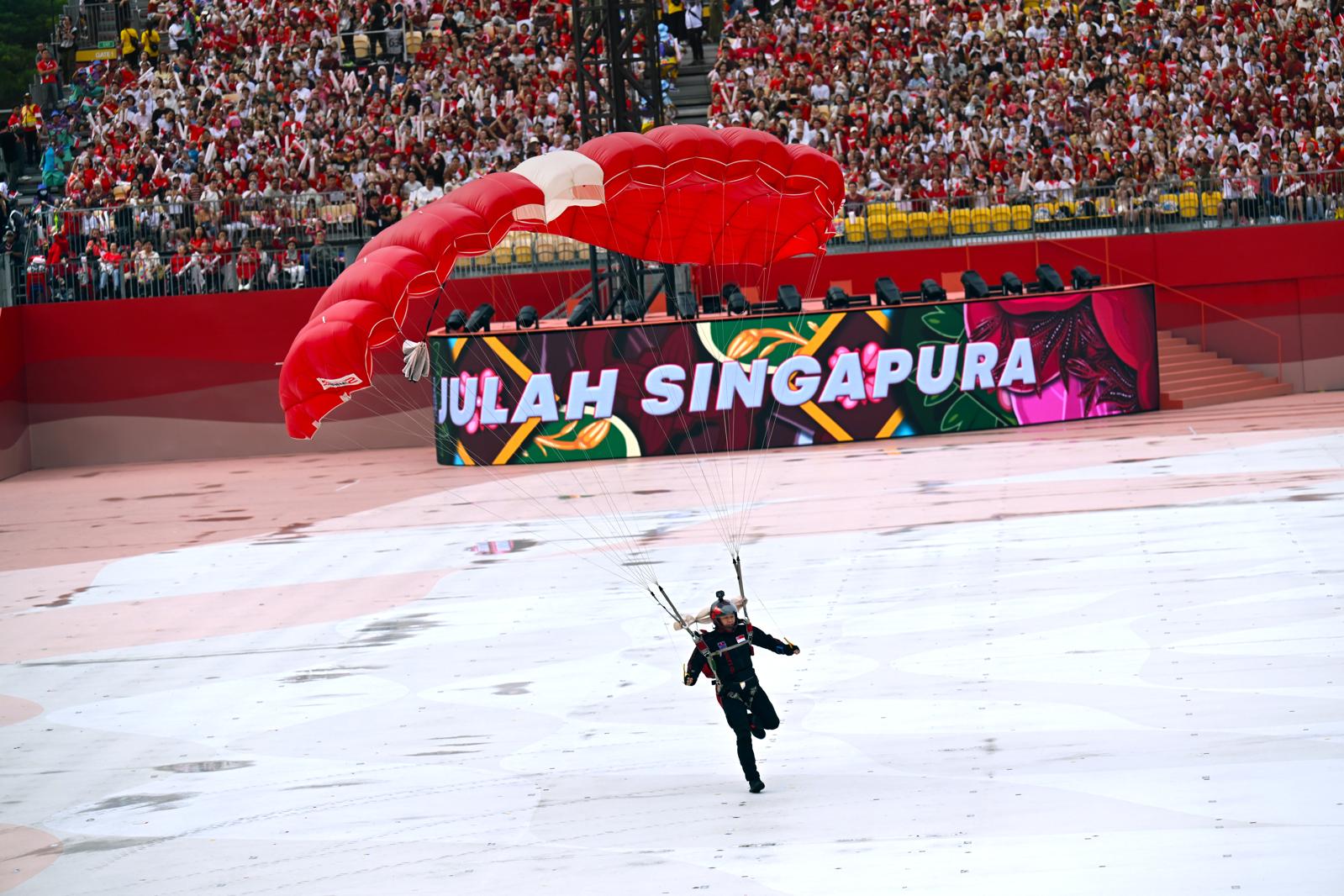
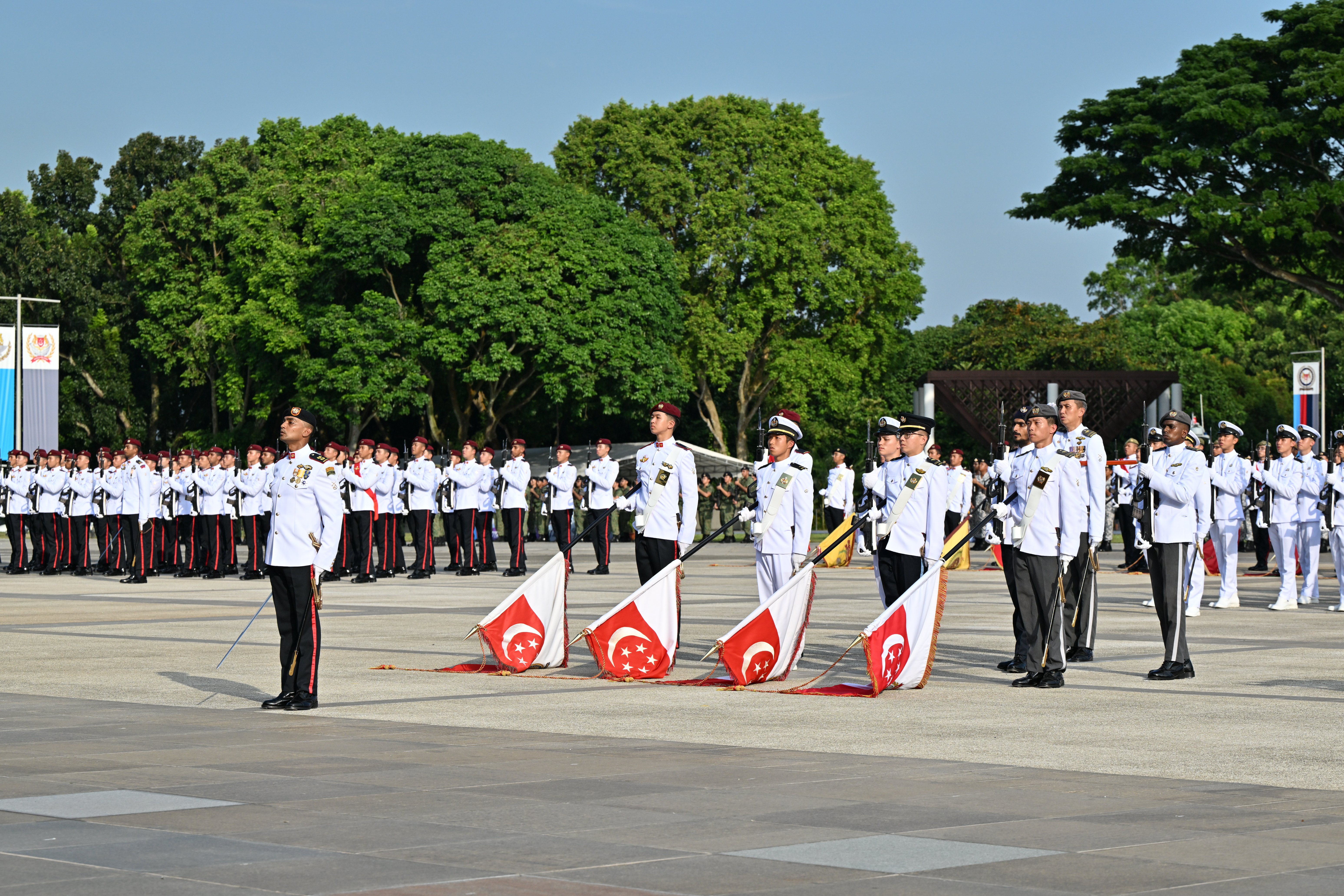
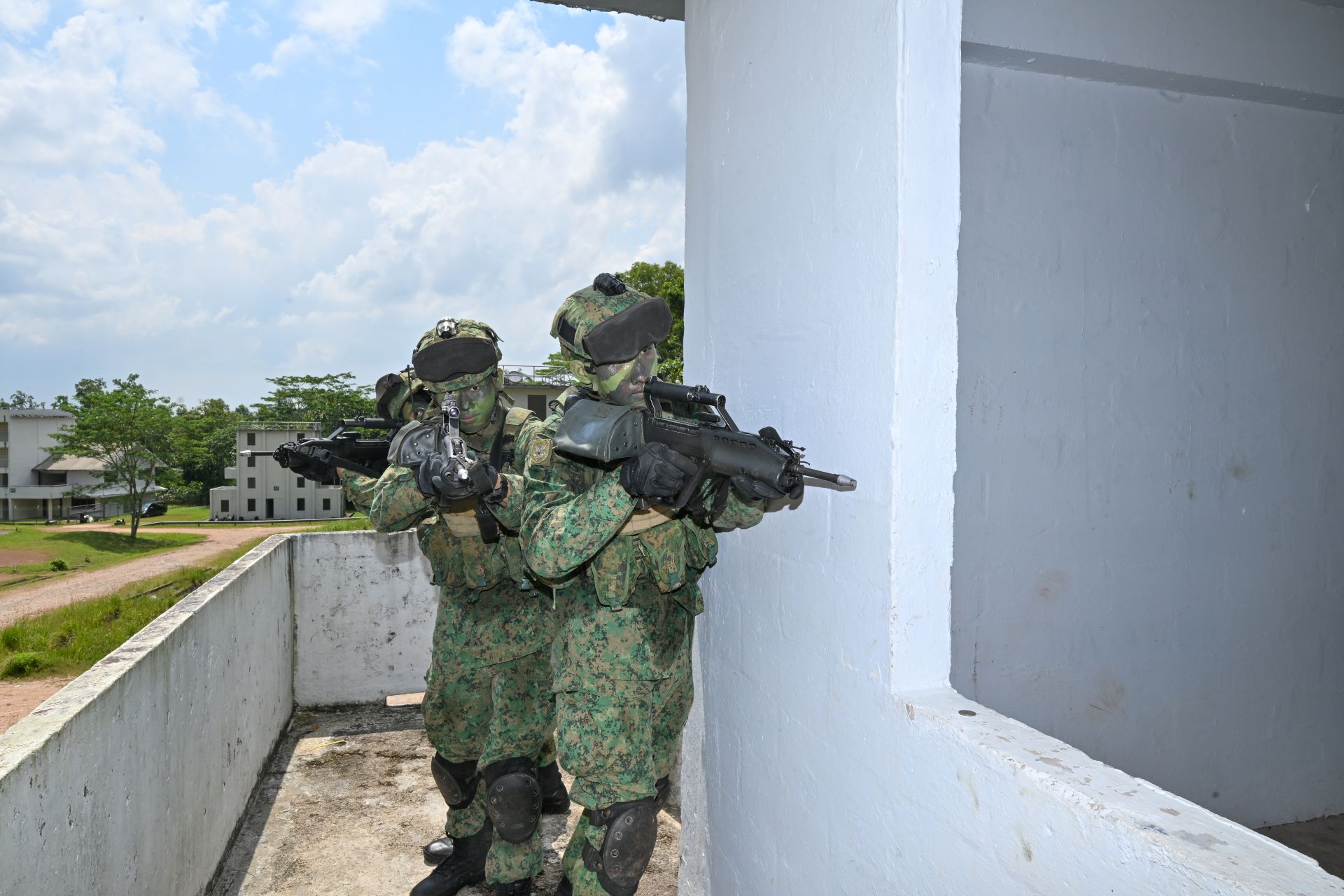
.jpg?sfvrsn=b5383902_1)
.jpg?sfvrsn=4eb1b86e_1)
